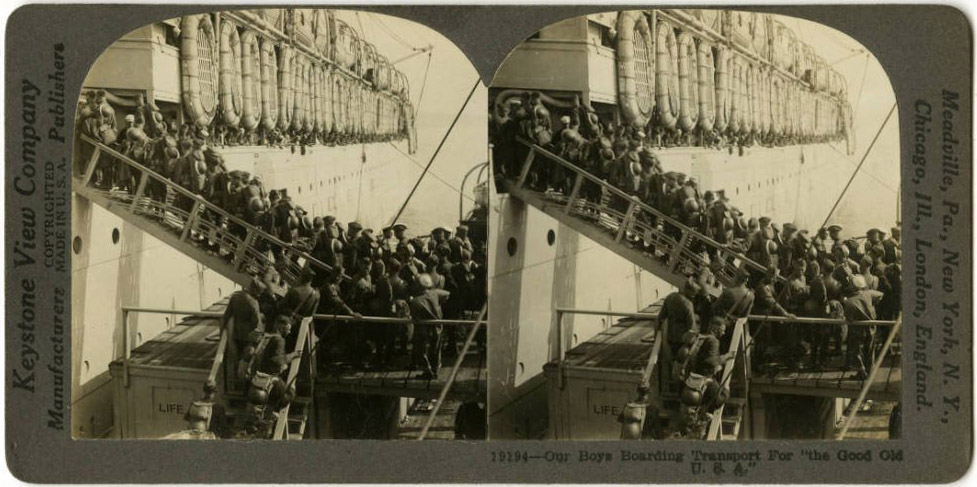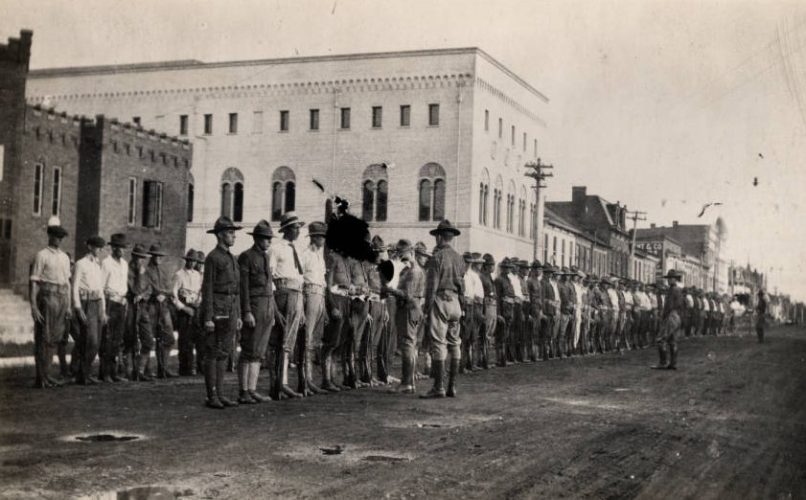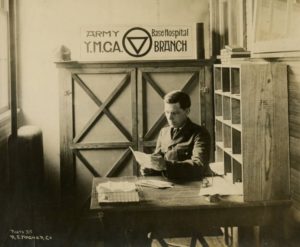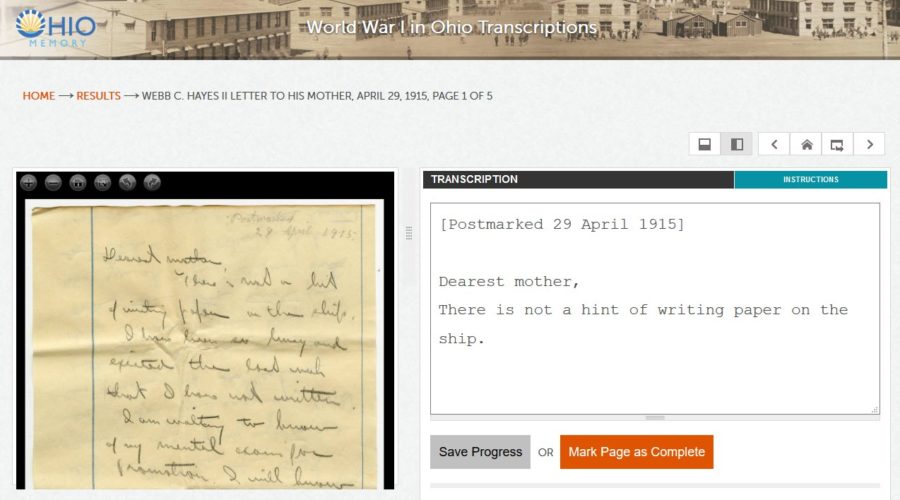Help Uncover the “Little Stories” of World War I!

In keeping with the blog post theme of recent weeks, today’s post is in recognition of the date’s important role in World War I history. It was on April 6th, 1917, that the United States officially declared war on Germany, when President Woodrow Wilson signed a joint resolution passed through Congress in response to his request during an address to both houses just four days earlier. Although the United States had maintained its official stance of neutrality since the war’s start in 1914, increasing pressure from Germany’s use of military tactics at sea and its attempted alliance with the Mexican government drove the nation to sever relations and “to employ the entire naval and military forces of the United States and the resources of the Government to carry on war against the Imperial German Government.”

Efforts toward mobilization had already begun prior to the official declaration, and after April 6th, defense efforts began in earnest. Troops were assembled through the use of preexisting military units, volunteers and draftees, drastically increasing America’s military might: from approximately 350,000 servicemen at the beginning of U.S. entry into the war, recruitment and enlistment raised that number to nearly four million just over a year later, about half of whom were sent overseas. Men and women not participating on the battlefront were also expected to do their part at home by joining the workforce, purchasing war savings loans to finance the conflict, rationing their resources and establishing “victory” gardens. Support for the allied effort was rallied through propaganda campaigns and speeches sponsored by federal, state and local governments, as America truly joined the Great War.

If you have been following the Ohio Memory blog, you’ll know that new content is regularly being added to the World War I in Ohio digital collection as part of the “Little Stories of the Great War” project, funded by the National Endowment for the Humanities, which covers the experiences of Ohioans both at home and overseas during the war period. But looking back 100 years later, it can be hard to understand what life was like for those living at the time.
One exciting option that the World War I in Ohio project has developed to let visitors connect directly to past Ohioans who experienced the war is a new online transcription tool. You can explore the stories of those who lived through the conflict in their own words, and at the same time share more of those stories online by helping to transcribe handwritten letters, diaries and more at transcribe.ohiohistory.org!
From the homepage, you can select a format to transcribe, search for keywords like names or topics of interest, or browse all the materials currently awaiting transcription. After you find an item of interest, it’s as simple as reading the handwritten document, and typing out what you read. Once you submit your transcription and it has been approved, transcribed text is added to the full text field in the item’s record on Ohio Memory, making the content easier to discover and use now and in the future. By taking time to transcribe these documents, Ohio Memory users can contribute to uncovering the important experiences of Ohioans during the Great War.

We invite you to try out the transcription tool and see what you learn about what it was like to attend training camps like Camp Sherman, serve overseas and face the battlefield, or correspond from the home front as your loved one was away from home. Some items of particular interest may be the diary of American Red Cross nurse Mary E. Gladwin, recording her service in Belgrade, Serbia; family correspondence from Harlan Johnson, an aero-observer with the 168th Aero Squadron who was killed in a reconnaissance flight in France; the diary of Vaughan Horner, who served with the Armco Ambulance Corps in France between 1917 and 1919; or letters from members of the Gorrell family of East Cleveland, both on the home front and serving overseas. If you have any questions or feedback, you are welcome to contact project staff at [email protected].
Thanks to Lily Birkhimer, Digital Projects Coordinator at the Ohio History Connection, for this week’s post!



Leave a Reply
You must be logged in to post a comment.